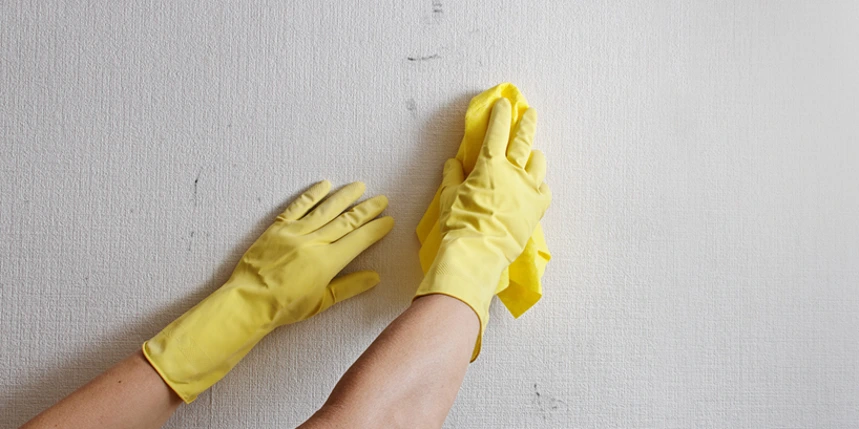How to Get Scuff Marks Off Walls

Nothing can ruin an otherwise perfect paint job like unsightly scuffs. But before you resort to repainting, you may want to try cleaning or touching up the affected areas. The success of your efforts will depend on the paint type, quality of application, and the source of the scuff.
The experienced professionals at Five Star Painting® are pleased to offer the following suggestions for how to get scuff marks off walls:
- Soap and water
- Baking Soda
- Tennis balls
- Toothpaste
- Erasers
- Melamine foam
- Chemical application
- Touching up a wall with paint
How to Get Scuff Marks Off Walls
There are several tried and true methods to restore scuffed-up interior walls. Before jumping in, follow these general tips:
- Test out your method of choice in an inconspicuous area first
- Be gentle. Avoid removing paint or creating a bigger problem
- Try to remove the scuff marks using natural materials before resorting to harsh chemicals
Before resorting to painting, try fixing scuffed walls with these hacks:
Use mild dish soap and water or your favorite all-purpose cleaner and some elbow grease to remove the scuff. Remove the soap solution using a damp cloth and allow the area to dry.
Baking soda is mildly abrasive and may be all you need to remove minor scuffs. Create a solution by dissolving four tablespoons of baking soda into one quart of water. Dampen a soft cloth or sponge with the mixture and rub gently to remove marks. Remove any residual solution with a clean, dry cloth.
A clean tennis ball may help to remove scuffs as the outer layer of felt acts like a soft bristled eraser. Gently rub the tennis ball back and forth over the area, applying a bit more force as needed.
White, non-gel toothpaste may be applied to satin or glossy finish painted walls. Place a small amount on the end of a cotton swab or a clean toothbrush and gently work back and forth over the mark. Use a clean, damp cloth to remove any residue. Allow the area to dry.
An ordinary pencil eraser can be used to get scuff marks off walls like you would erase pencil marks from paper.
Magic erasers or even a damp sponge may be effective on fresh marks. Apply gentle pressure to the scuff itself and avoid the paint in the surrounding area.
As a last resort for removing minor scuffs, use a solvent-based liquid such as nail polish remover. Place a small amount on the end of a cotton swab and dab the mark. Work slowly and methodically to avoid damaging the paint.
If your attempts at removing the scuffs are unsuccessful, you may need to touch up the wall with paint.
How to Touch Up a Wall with Paint
Painting over scuff marks can be a straightforward and effective way to make your walls look good again. Whether you're addressing small imperfections, covering scuff marks, or restoring patches, the process involves careful preparation and attention to detail. In the end, you want to seamlessly blend the new paint with the existing surface.
Follow these paint touch-up steps:
- Lightly sand the area immediately surrounding the scuff mark.
- Clean the surface using a sponge or clean cloth and a mixture of mild soap and water. Dry with a clean towel before proceeding.
- Use a spackling compound to fill in any minor dents, following the directions on the label for use and drying time.
- Apply primer to the repaired section of the wall and allow it to dry.
- Paint the area with matching paint using the proper roller or brush.
If it's noticeable that you've touched up your paint (the new color doesn't blend well, the touched-up area has more sheen, etc.), you may consider repainting the entire wall or calling our professional services.
Find a Five-Star Painting Professional in Your Local Area
Overwhelmed by the idea of dealing with scuffed walls? The pros at Five Star Painting are happy to assist! We remove scuff marks, fix dents, and help your space look great again. Give us a call or request a free estimate online!
 Click to call
Click to call


